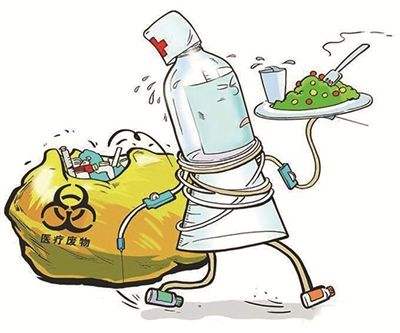Medical waste refers to wastes that are directly or indirectly infectious, toxic, and other harmful, generated by medical and health institutions in medical treatment, prevention, health care, and other related activities. There are five types of medical waste: infectious waste, pathological waste, damaging waste, pharmacological waste and chemical waste. Because medical waste has special properties, special treatment methods are needed to eliminate its hazards and dangers. At present, there are four kinds of medical waste treatment methods commonly used at home and abroad.
1.Sanitary landfill method
The landfill treatment method has the advantages of simpler process, less investment, and can process a large amount of medical waste. The main disadvantages are the need for disinfection before landfilling, less waste reduction, large investment in landfill construction, large land occupation, and the production of a large number of harmful gases such as methane, ammonia, hydrogen sulfide gas, nitrogen, and carbon monoxide. Hydrogen and volatile organic compounds require long-term monitoring of soil and groundwater.
2. High-temperature incineration
The main advantages of incineration technology are significantly reduced volume and weight, and obvious waste destruction; suitable for all types of medical waste and large-scale applications; stable operation, good disinfection and sterilization and pollutant removal; potential heat energy can be recycled; technology More mature. Disadvantages are mainly high cost, serious air pollution, easy to produce dioxins, polycyclic aromatic compounds, polychlorinated biphenyls and other toxic substances, and harmful gases such as hydrogen chloride, hydrogen fluoride and sulfur dioxide, which requires a complete exhaust gas purification system; bottom Slag and fly ash are hazardous.
3. Chemical disinfection method
The advantages of the chemical disinfection method are that the process equipment and operation are simple and convenient; the deodorizing effect is good; the disinfection process is rapid and the one-time investment is small and the operating cost is low. For dry processing, the volume reduction rate of the waste is high, and no waste liquid or waste water and waste gas are generated. The disadvantage is that the dry waste has higher requirements on the crushing system, and the pH monitoring (automation level) of the operation process is very high. Waste liquid and waste gas are generated during wet waste treatment. Most disinfectants are harmful to the human body. Not suitable for the treatment of chemotherapy waste, radioactive waste, volatile and semi-volatile organic compounds.
4. High-temperature pyrolysis incineration

Treat thoroughly
The pyrolysis incineration method of medical waste is pyrolysis gas and pyrolysis coke. The combustible gas in the pyrolysis gas is used as fuel for pyrolysis incineration, and its operating cost is much lower than that of conventional incineration method. In addition, the pyrolysis incineration method requires a smaller air coefficient, the amount of flue gas generated is significantly reduced, and the required flue gas purification device is smaller, so the overall cost is smaller than the conventional incineration method;
Less harmful substances are produced
In the traditional incineration process, since it is an oxygen-enriched combustion, dioxin is easily produced under these conditions. Pyrolysis is carried out under conditions of anoxic and acidic gas removal, which reduces the generation of dioxins, so the pyrolysis incineration method has a significantly reduced amount of dioxin than the traditional incineration method;
Wide range of application
High-temperature pyrolysis does not require pretreatment and classification of medical waste, and can be directly put into the furnace for processing, so there is no obvious selectivity for the treated waste.


